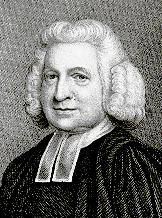 After reading a recent comprehensive post on resources about Charles Wesley by Ted Cambell, I was reminded of my love for the “other brother” behind the Wesleyan movement. I must admit, I often prefer to read a poem from Charles over a sermon from John (don’t tell anyone).
After reading a recent comprehensive post on resources about Charles Wesley by Ted Cambell, I was reminded of my love for the “other brother” behind the Wesleyan movement. I must admit, I often prefer to read a poem from Charles over a sermon from John (don’t tell anyone).
The Value of Narratival Theology
As we all consider what being a Wesleyan looks like in our current age, and as we consider a “New Methodism,” I think Charles has a lot to say to us.
Despite the fact that neither John nor Charles Wesley ever penned a systematic theology, we find deep theological roots to explore in their practical documents – including the poems and hymns of Charles Wesley. A wealth of theology can be unearthed if we are patient and creative enough to imagine ourselves inside the narratives that Charles Wesley composes in his hymns. Oftentimes complicated issues demand more comprehensive theological explorations – sometimes our questions about the Kingdom of God demand answers that are actually stories. When we can locate ourselves, our churches, our communities, and even our enemies in these stories (which are segments of The Story), it becomes easier to see our way through. But answers may come in unexpected, meandering, or metaphorical ways. In the end, we may be left with paradox – but isn’t this often the way of the Kingdom?
Practice Imagination
As we approach Advent, try your hand at exploring the theology inherent in this hymn. As we practice indwelling the True Story, our faith, as individuals and communities, can grow in ways that are beyond the capacity of systematics, logic, or debate. Blessings in your imaginings.
Hymn V, from Hymns for the Nativity of Our Lord
1. Let earth and heaven combine,
Angels and men agree,
To praise in songs Divine
The’ incarnate Deity,
Our God contracted to a span,*
Incomprehensibly made man.
2. He laid His glory by,
He wrapp’d Him in our clay,
Unmark’d by human eye
The latent Godhead lay;
Infant of days He here became,
And bore the mild Immanuel’s name.
3. See in that Infant’s face
The depths of Deity,
And labour while ye gaze
To sound the mystery:
In vain; ye angels, gaze no more,
But fall, and silently adore.
4. Unsearchable the love
That hath the Saviour brought,
The grace is far above
Or man or angel’s thought;
Suffice for us, that God we know,
Our God is manifest below.
5. He deigns in flesh to’ appear,
Widest extremes to join,
To bring our vileness near,
And make us all Divine;
And we the life of God shall know,
For God is manifest below.
6. Made perfect first in love,
And sanctified by grace,
We shall from earth remove,
And see His glorious face;
His love shall then be fully show’d,
And man shall all be lost in God.
*A span was measured as the approximate length of a man’s hand.
 Shannon Steed Sigler is a community artist, curator, and theologian. She also serves as the Director of Social Media Communications for BeADisciple.com. Shannon is the mother of a delightful two-year old and the wife of a liturgical scholar. Her own work and research center around a Wesleyan paradigm for the visual arts. Visit her website here.
Shannon Steed Sigler is a community artist, curator, and theologian. She also serves as the Director of Social Media Communications for BeADisciple.com. Shannon is the mother of a delightful two-year old and the wife of a liturgical scholar. Her own work and research center around a Wesleyan paradigm for the visual arts. Visit her website here.







Great post, Shannon! I hope someday with your interest in story you’ll be able to connect with the Network of Biblical Storytellers.
My initial reaction to the reference to “span” here is to the other meaning of “span” – lifespan. “God contracted to a lifespan” makes more sense, it seems to me.
Beth, that’s another great way to read the word “span.” I love Wesley’s use of that word in terms of the length of a hand – to imagine the entire Godhead made to fit in a hand. And then to think of it as you suggest – He fits into a lifespan, yet transcends time. Fantastic. Thanks for sharing!